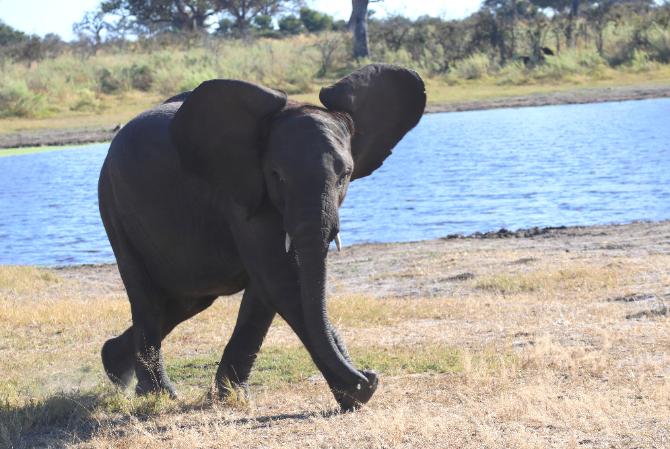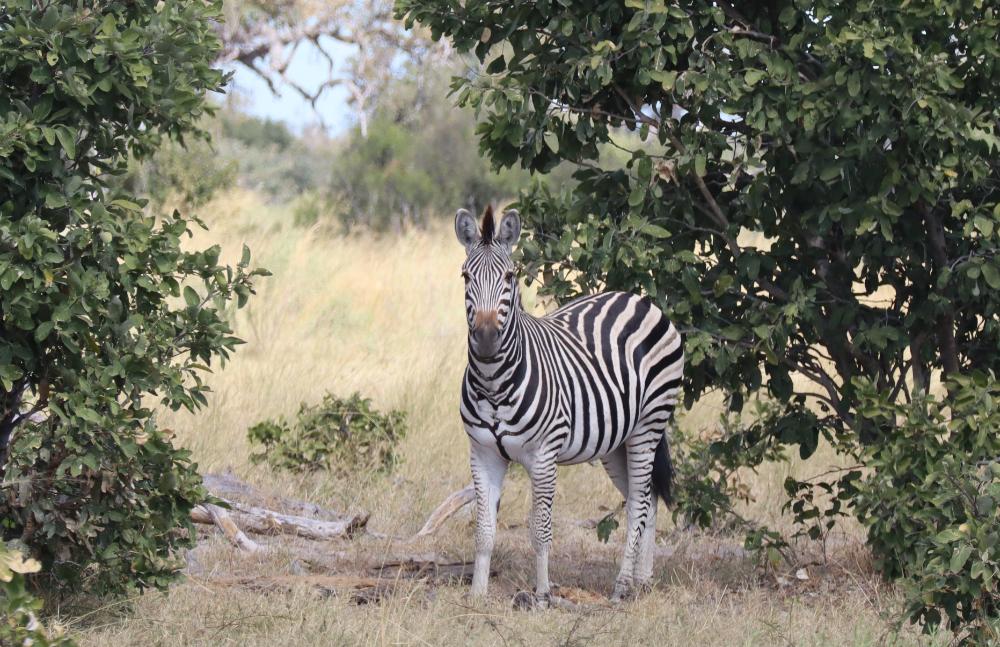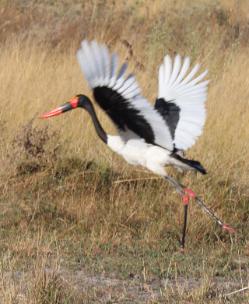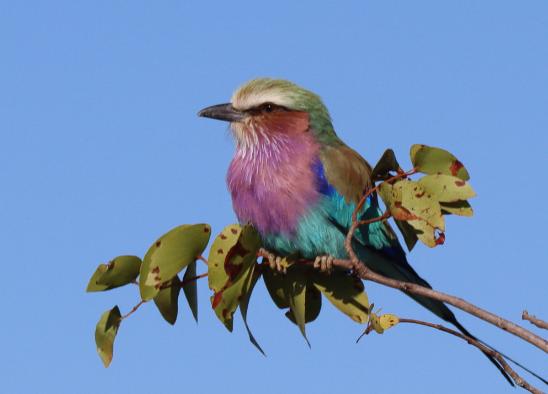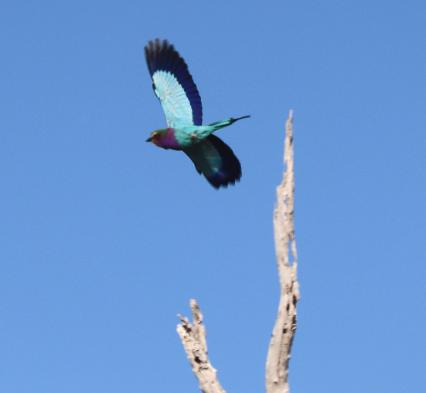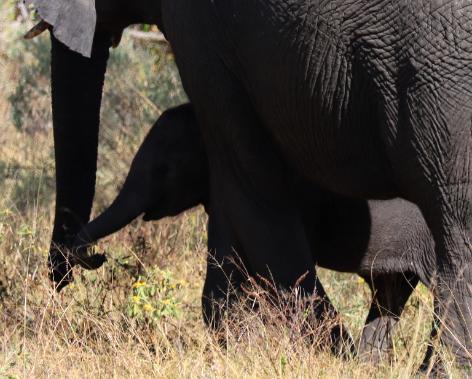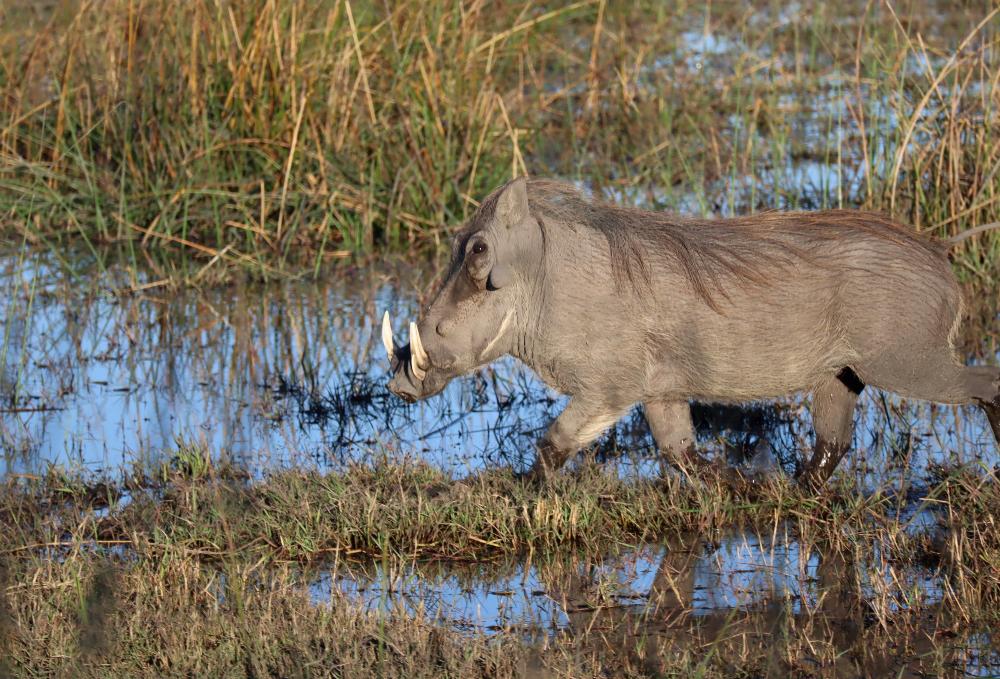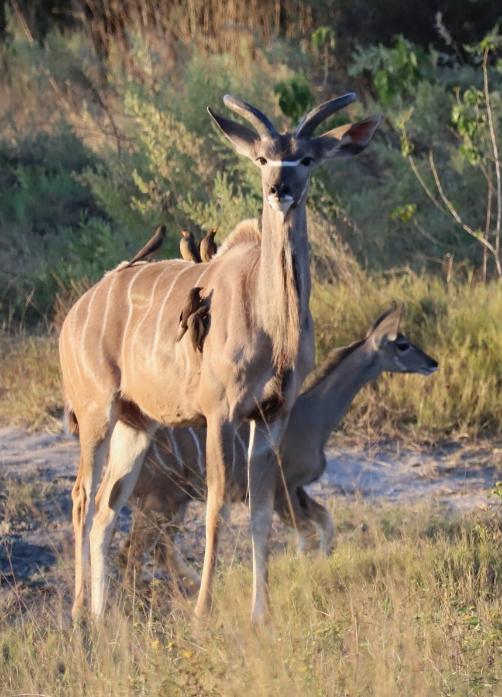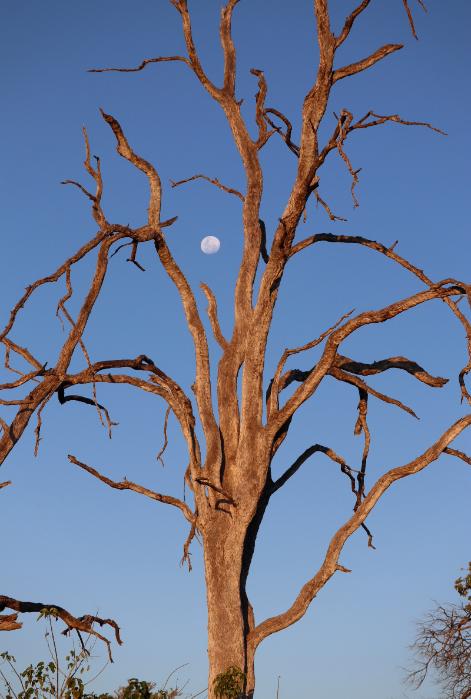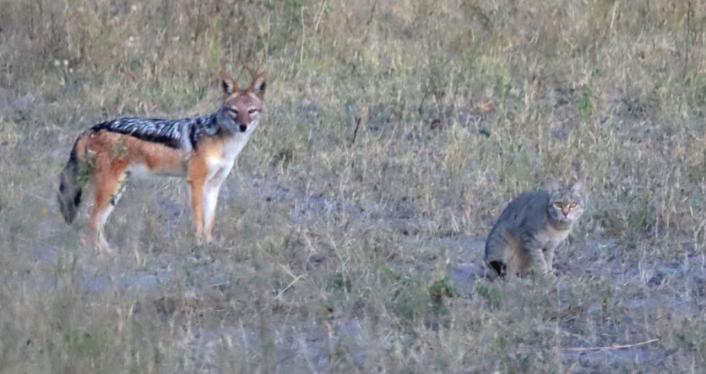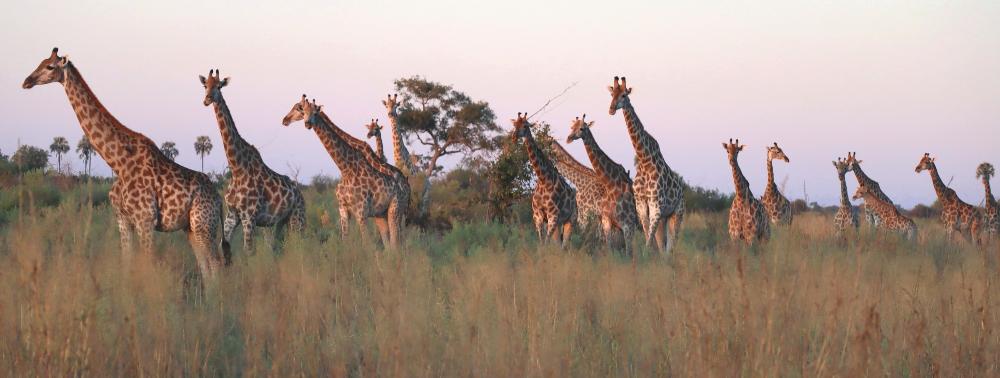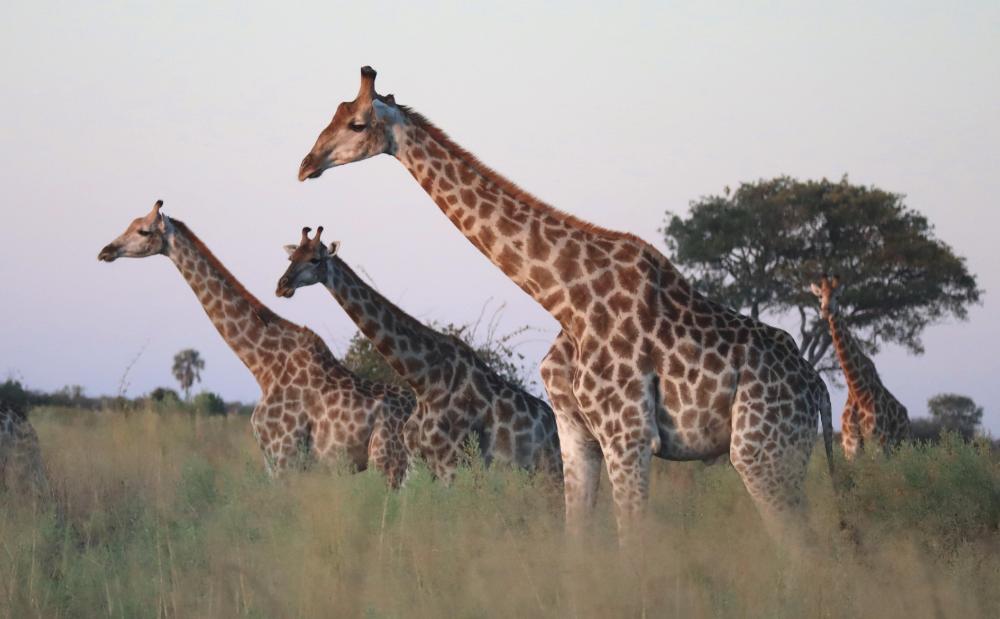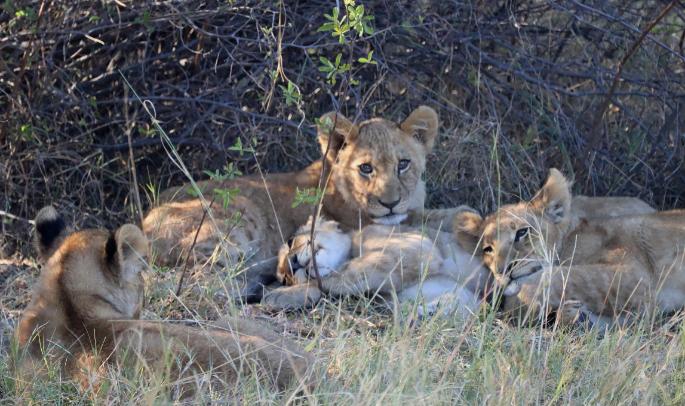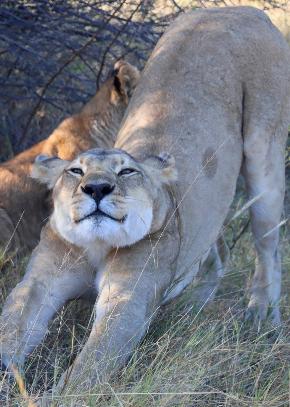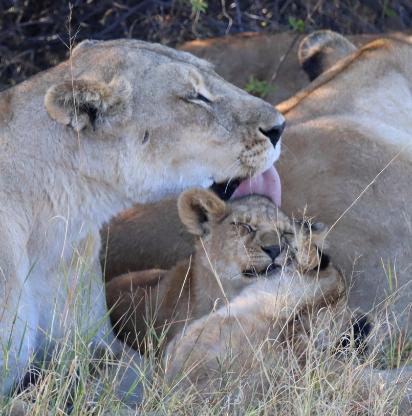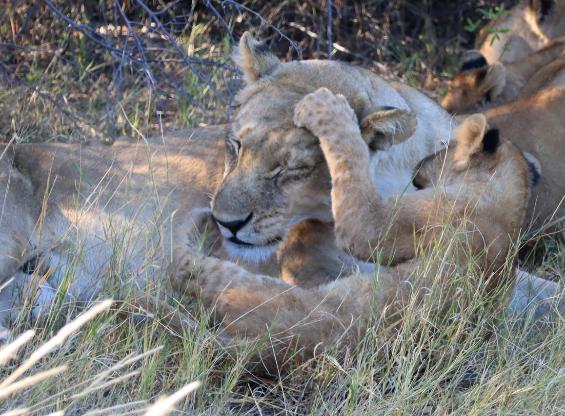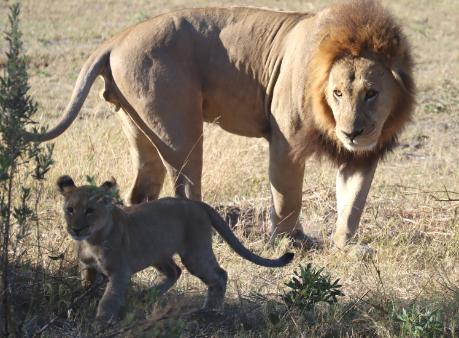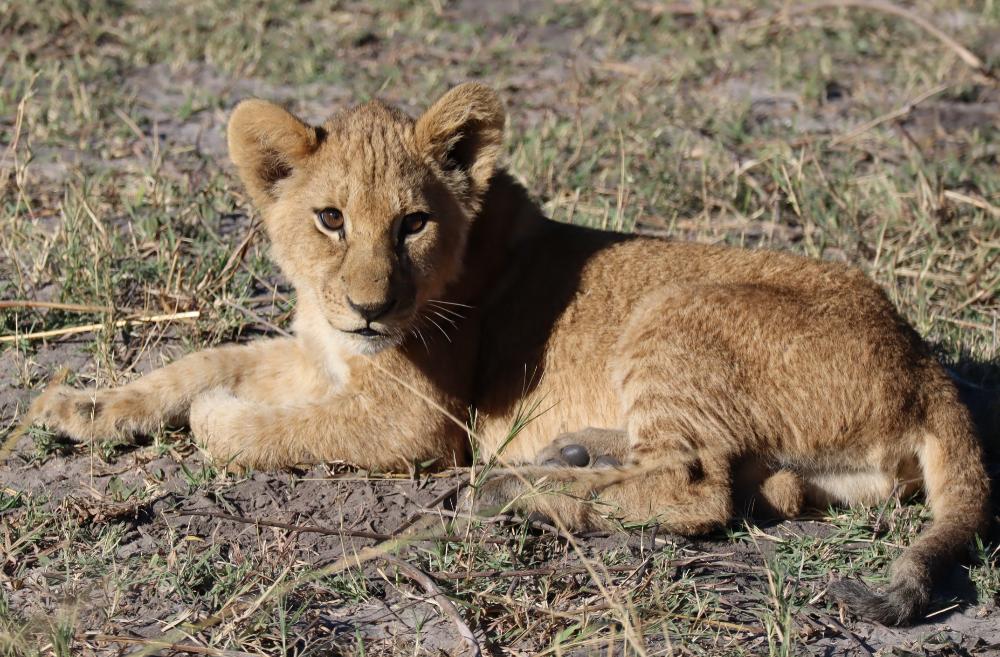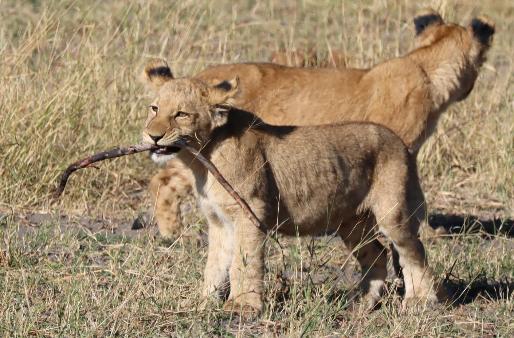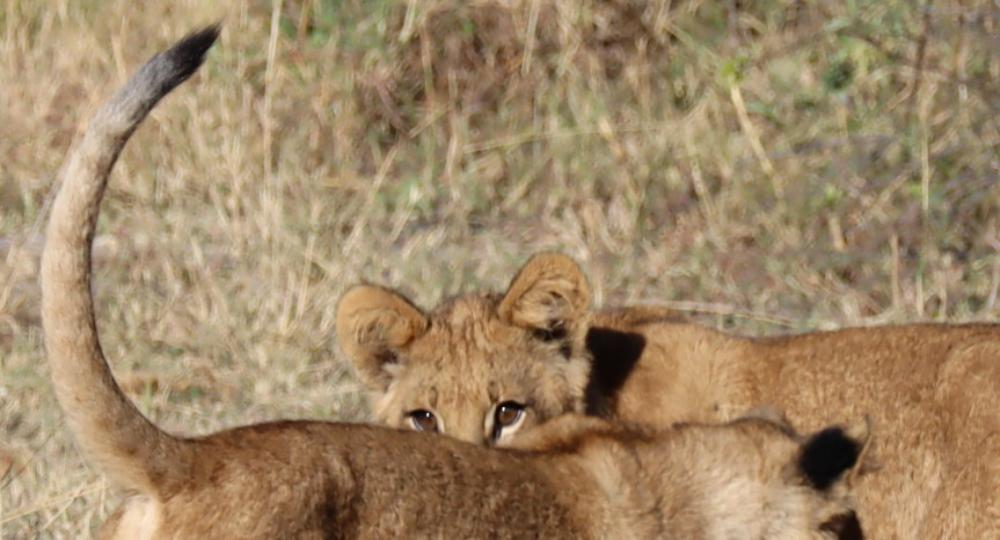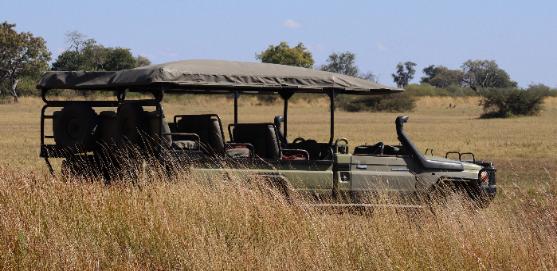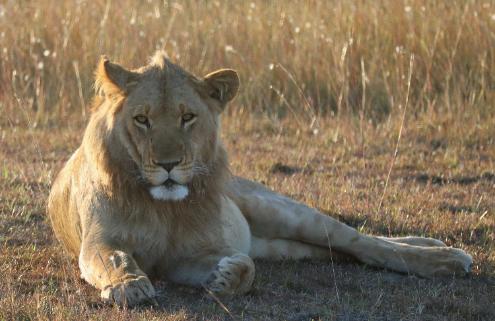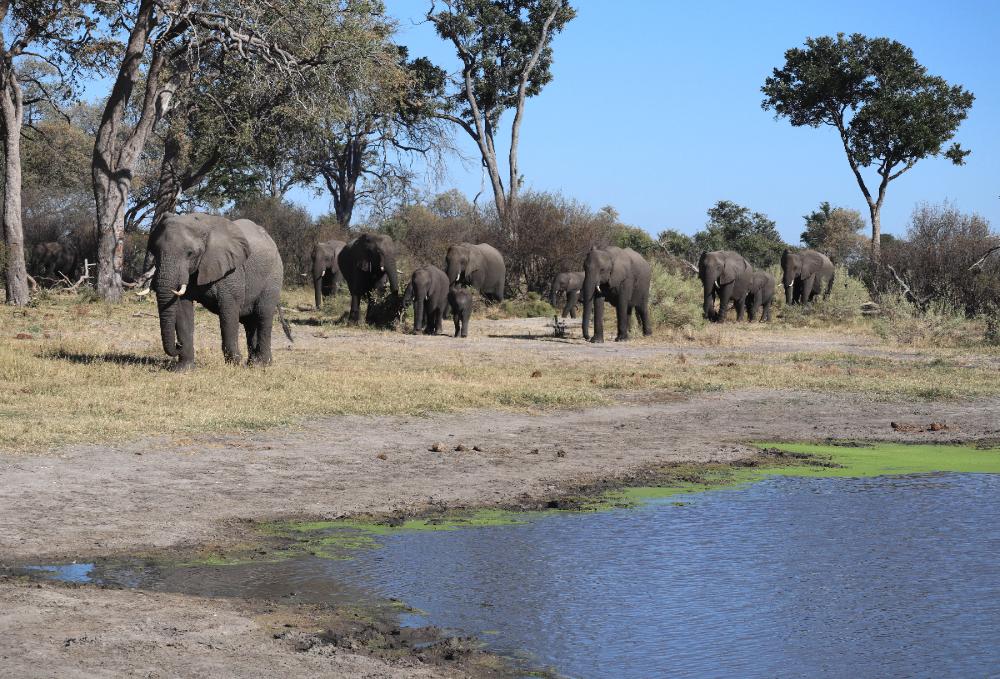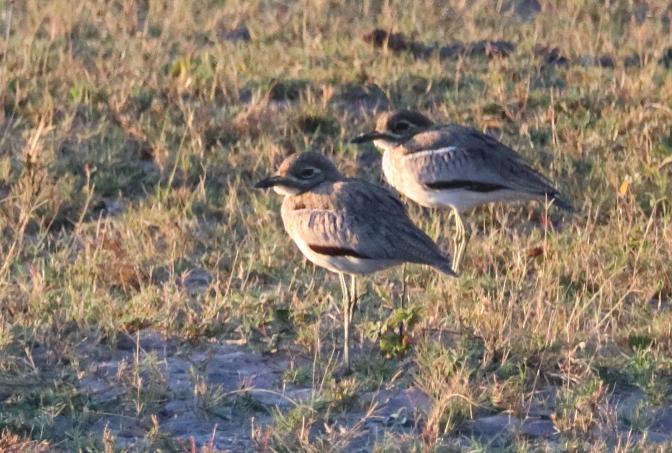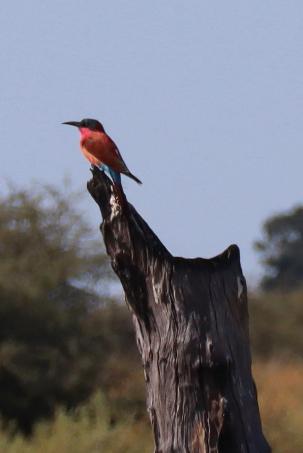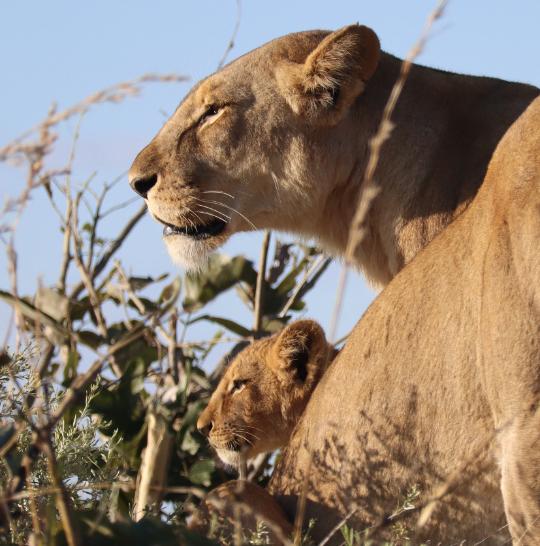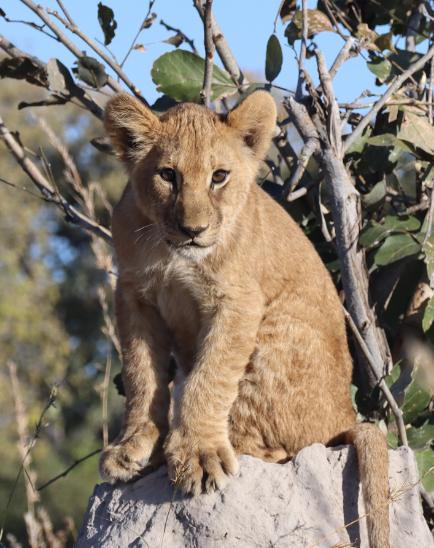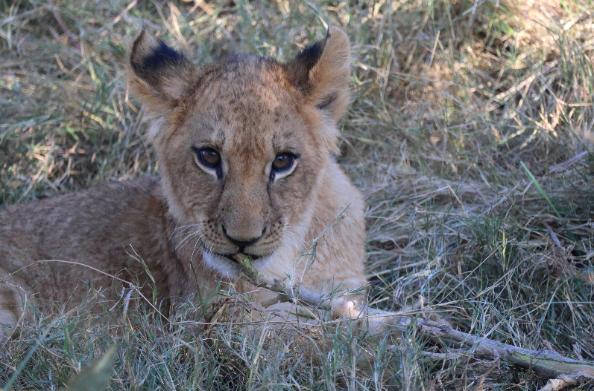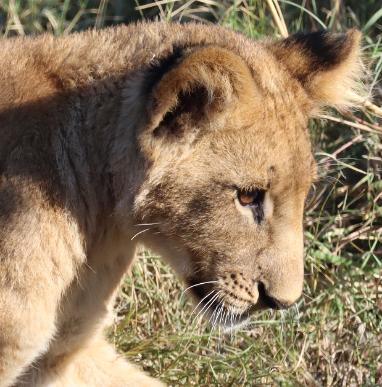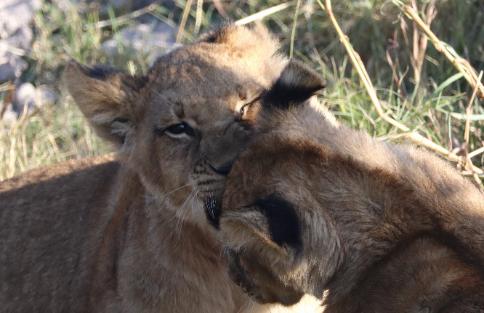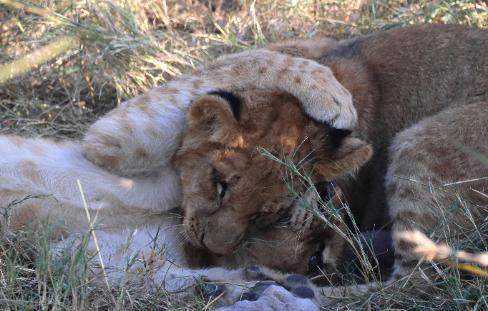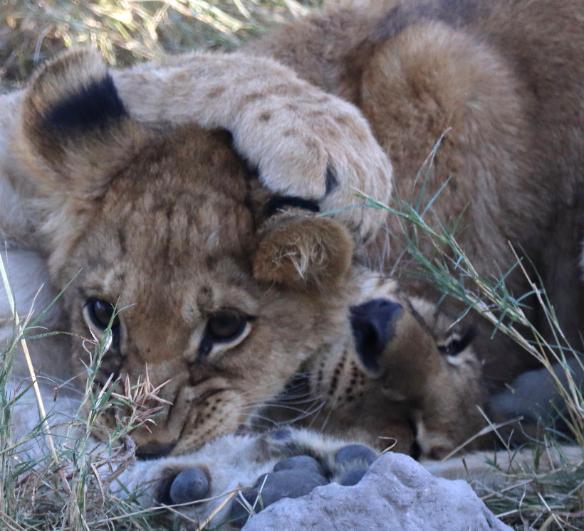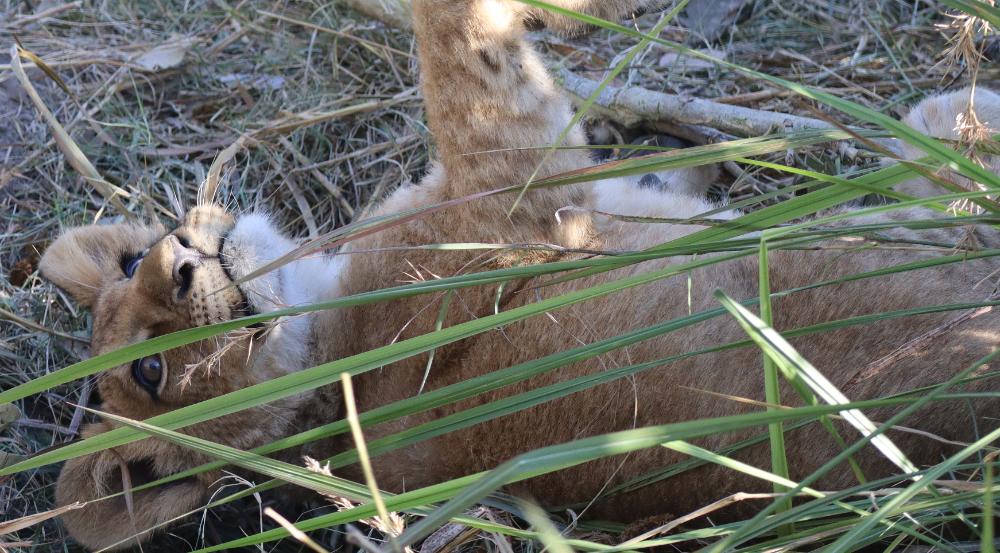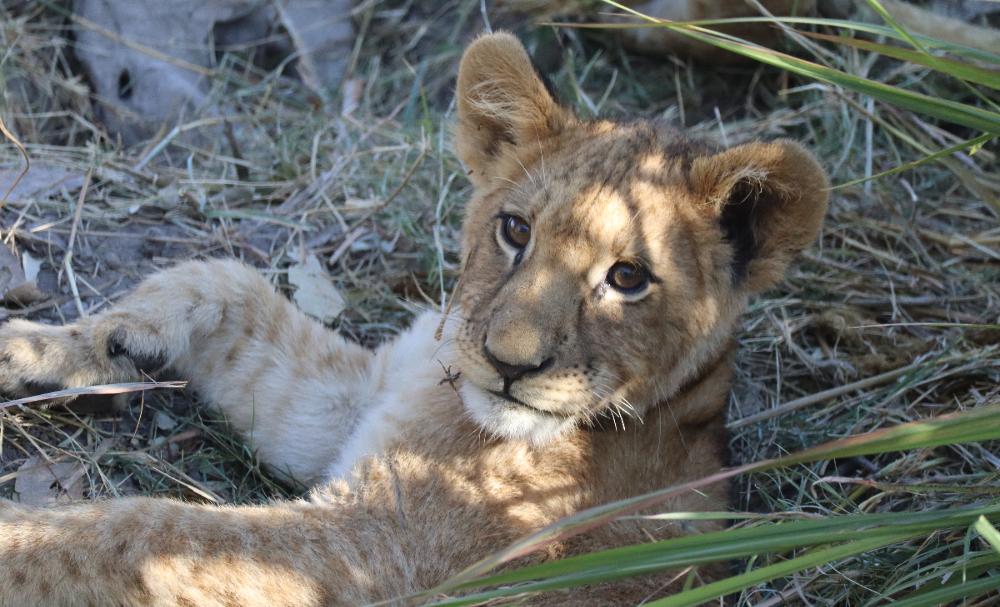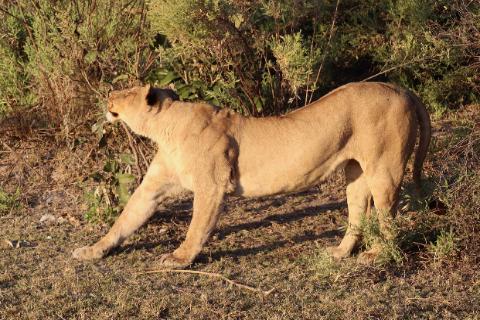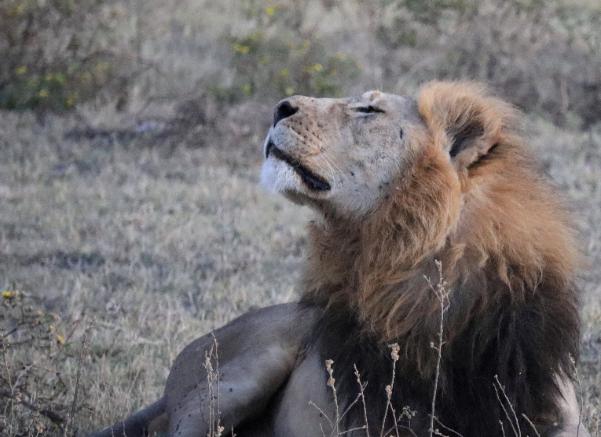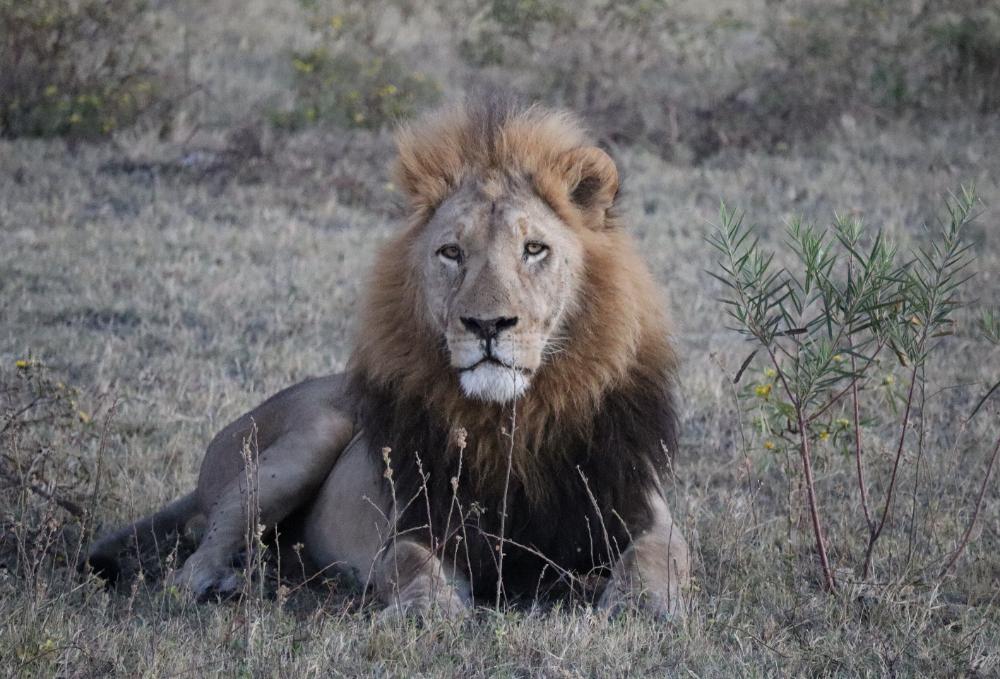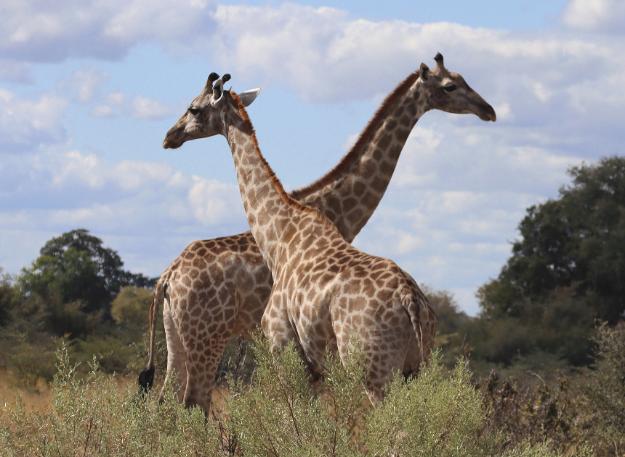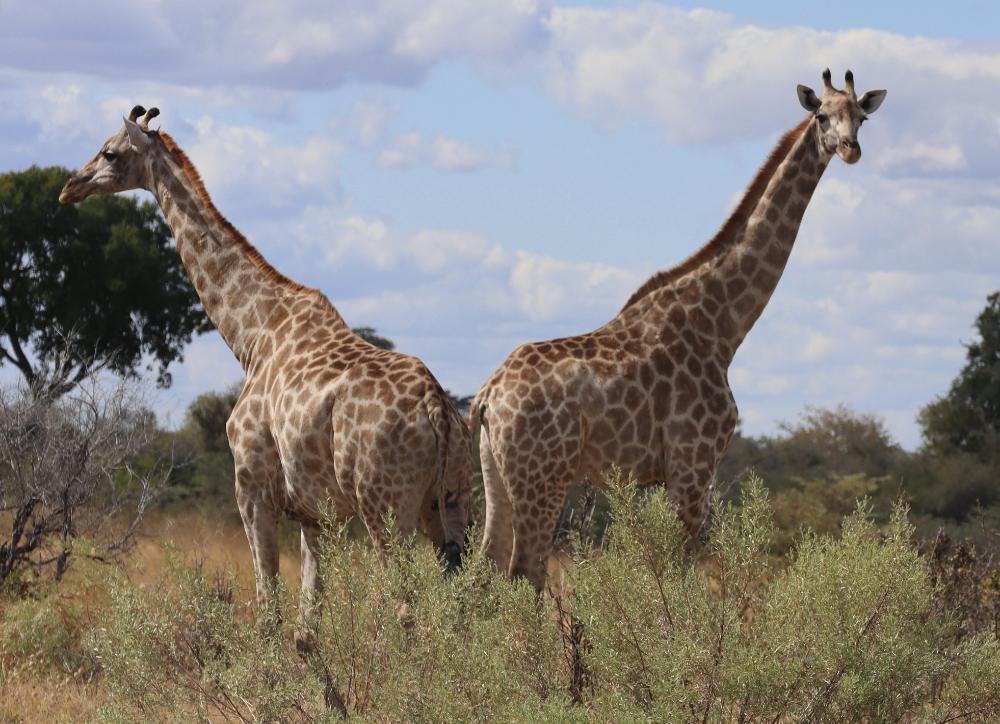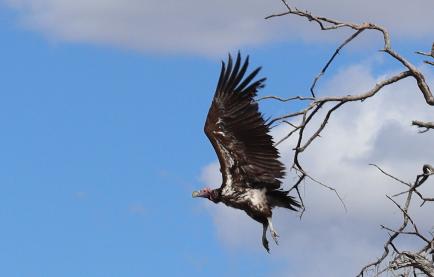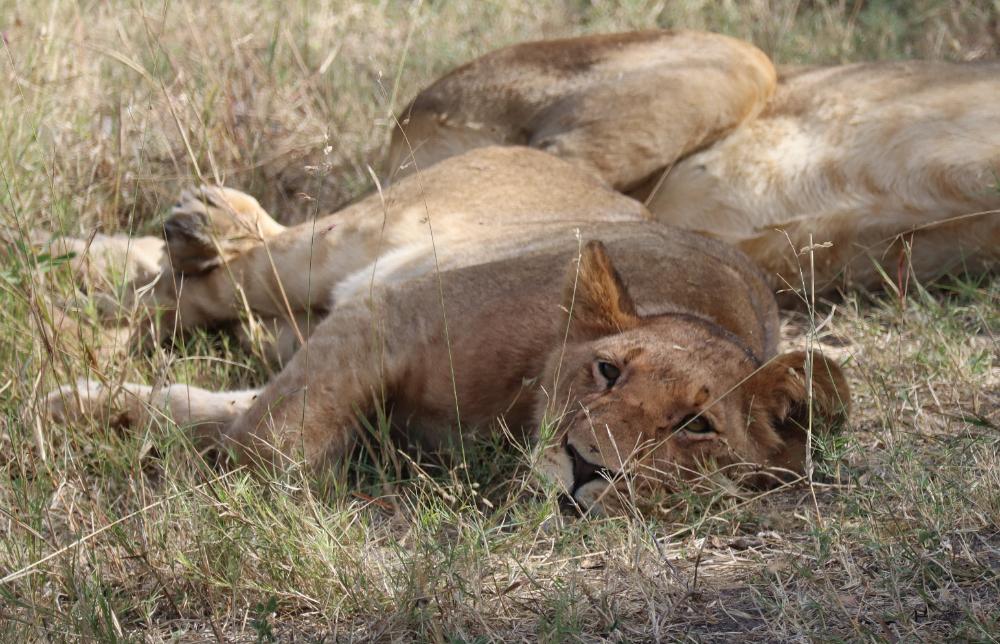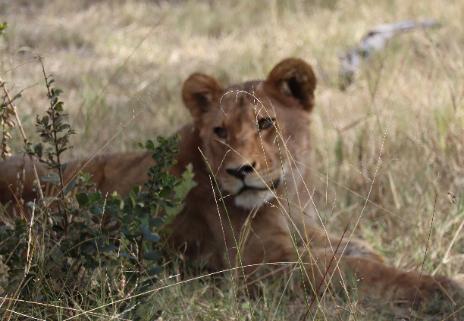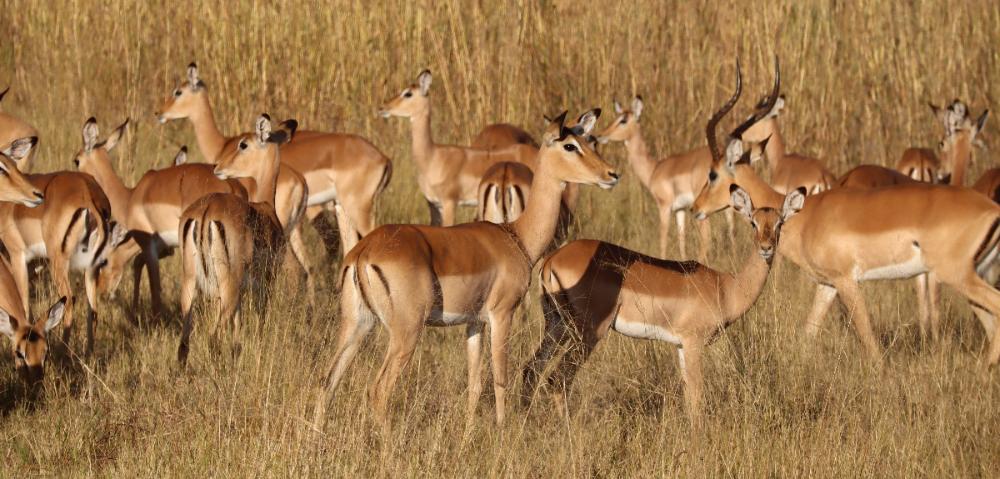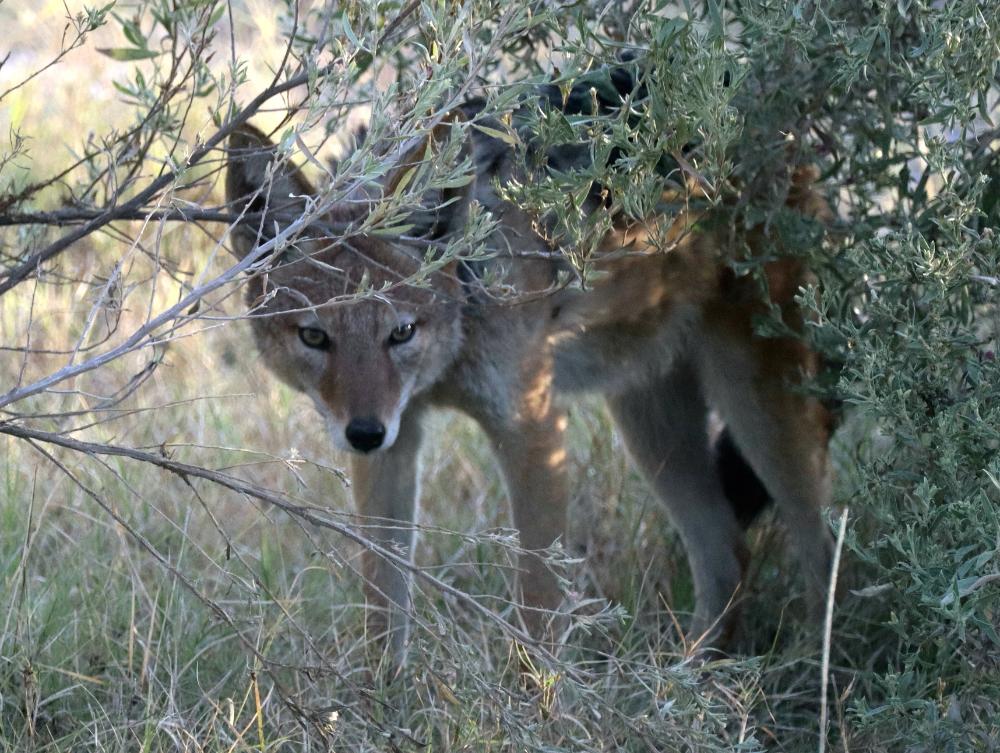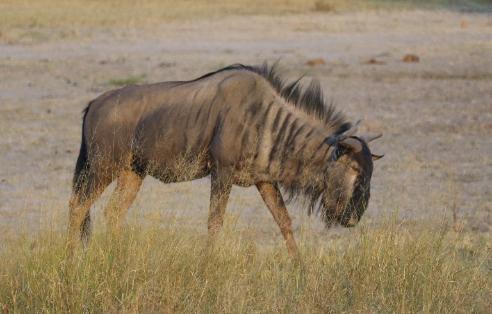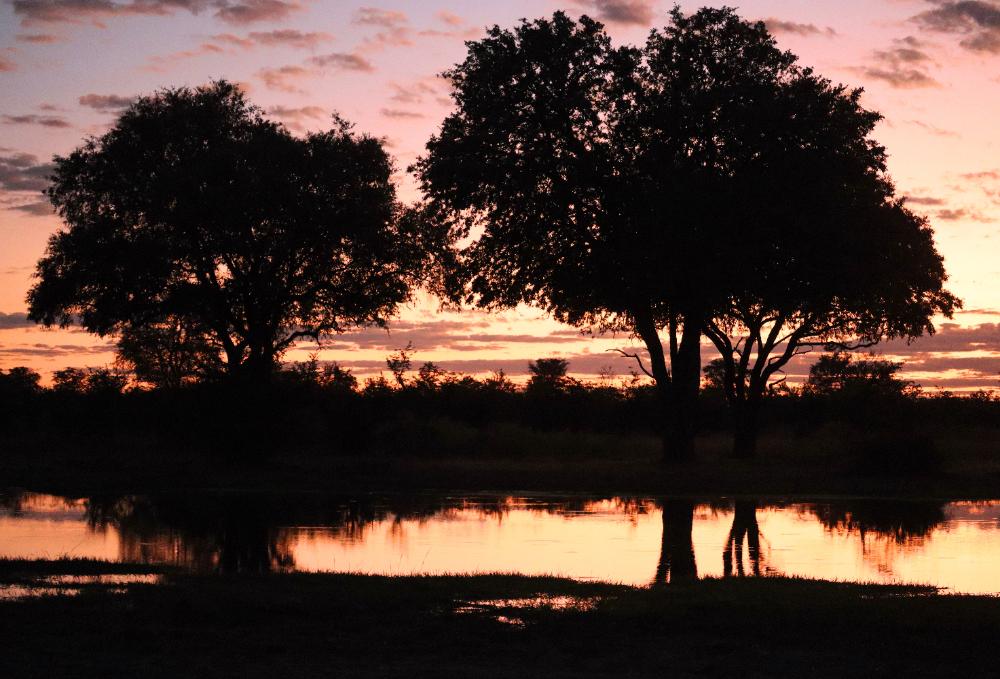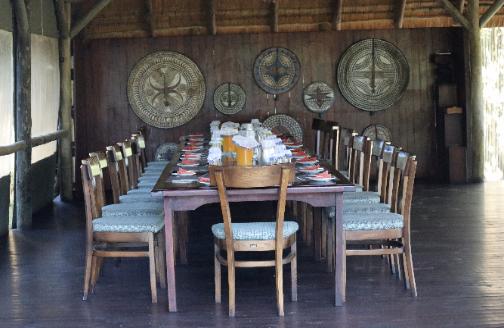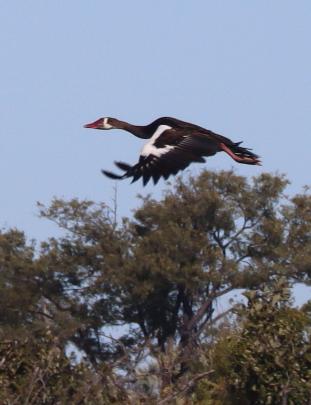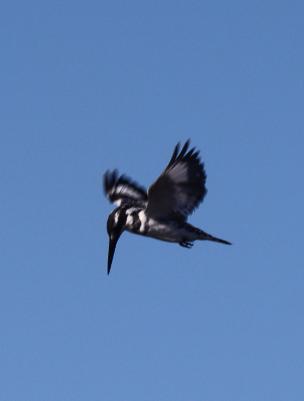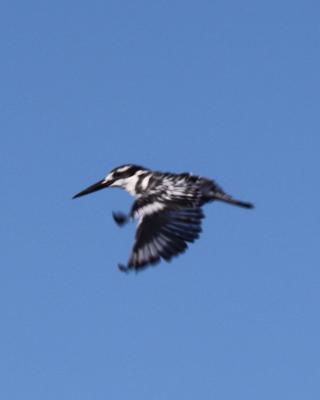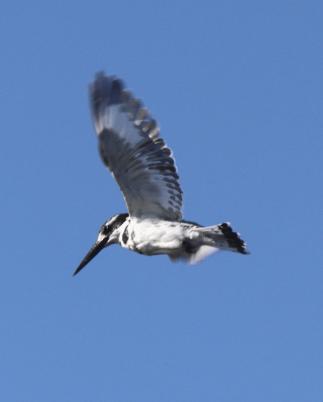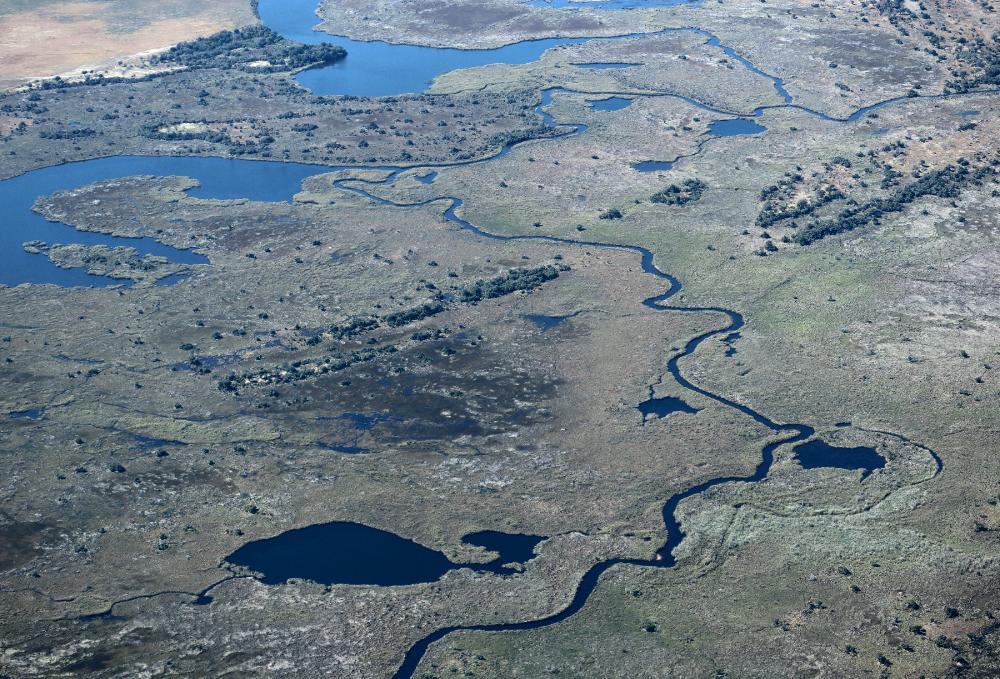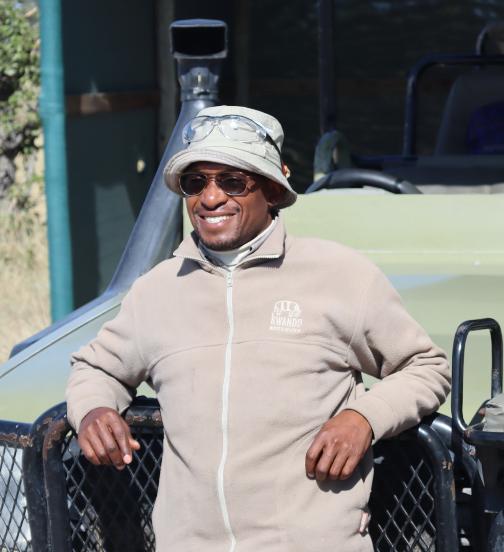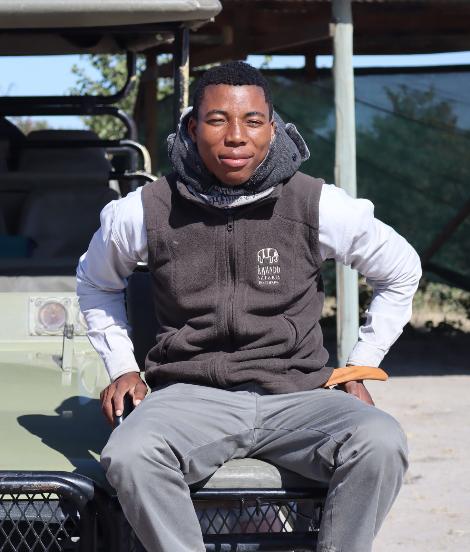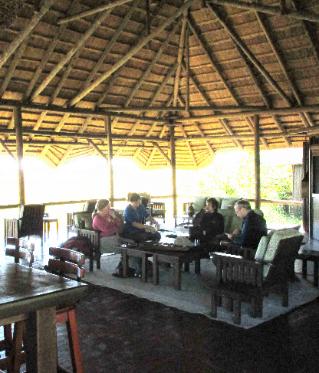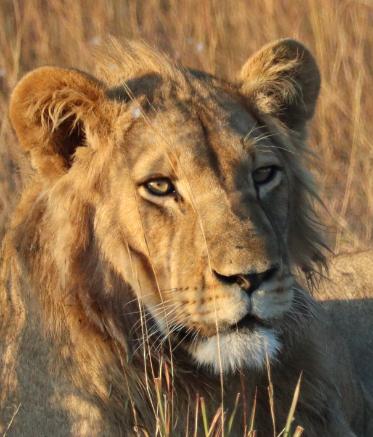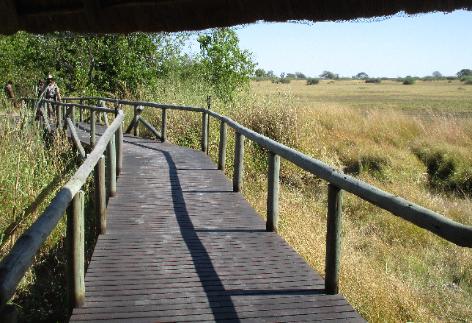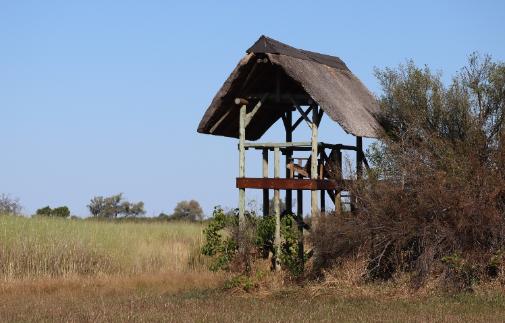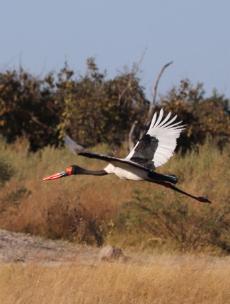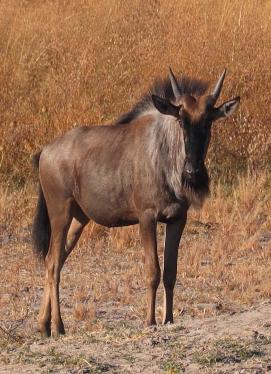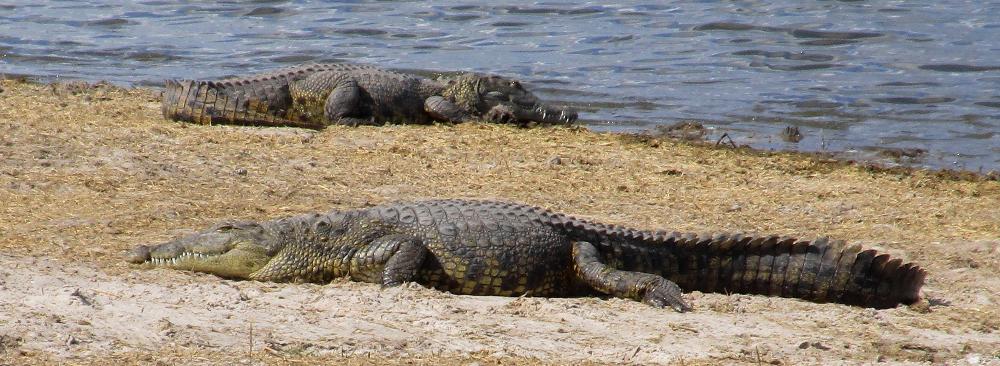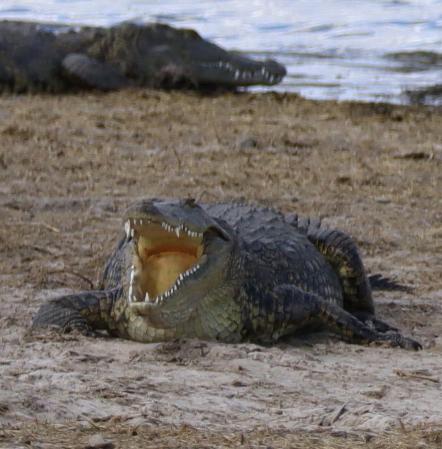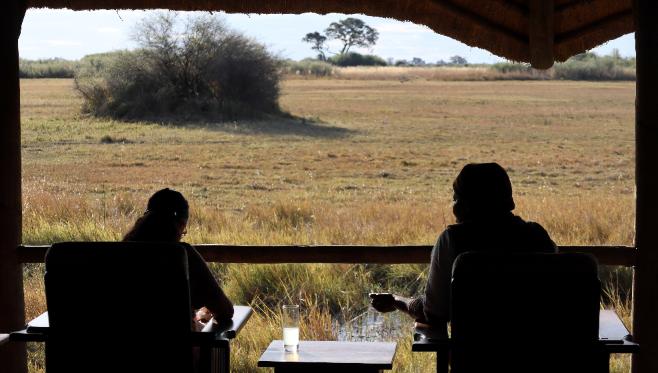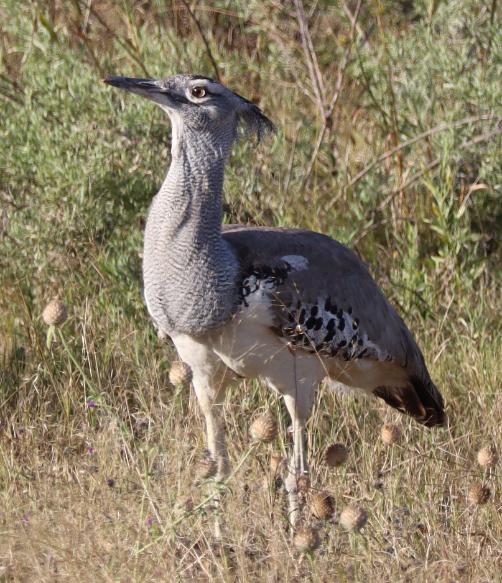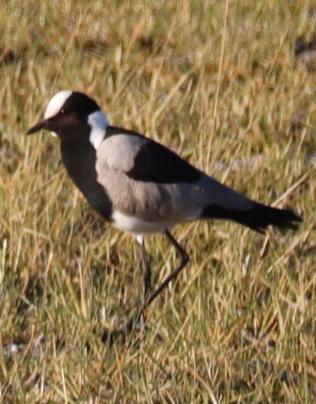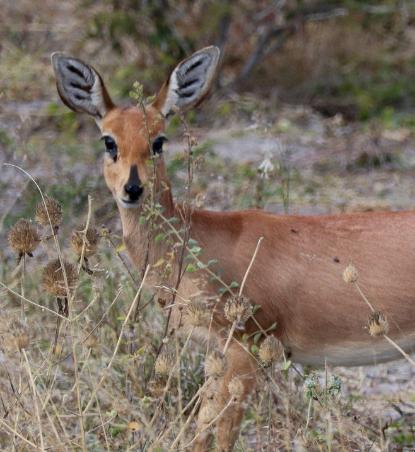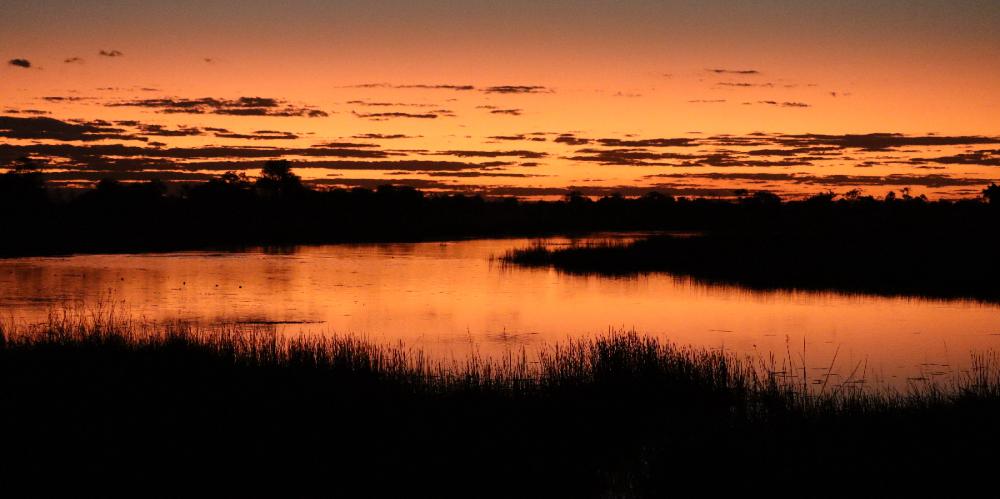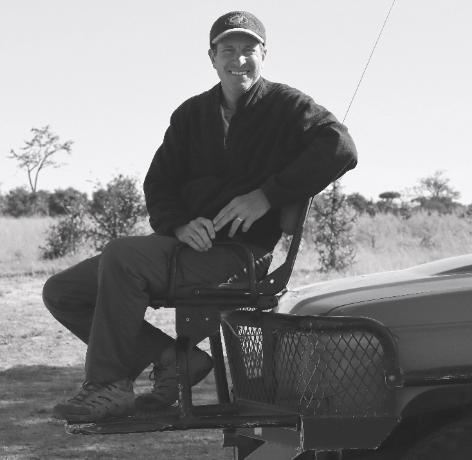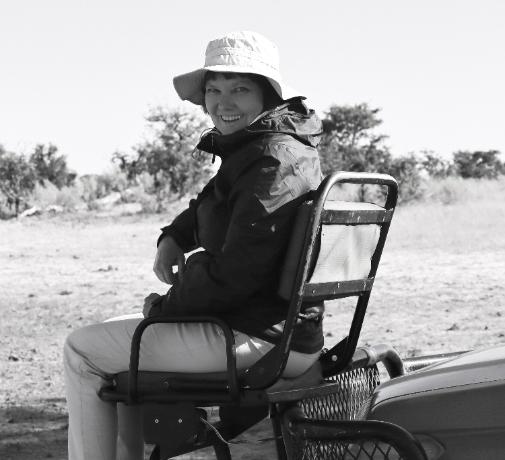Where We Be
X marks the spot for some great wildlife viewing in Botswana's Kwando Reserve
|
Lebala Camp -- Kwando, Botswana
|
Lebala means 'wide open spaces' and this camp
certainly qualifies: it sits in the midst of 550,000
acres of private unfenced wilderness. Here the
animals are free to come and go as they please
and it is we humans who are wonderfully, vastly
outnumbered. This is probably as close as you'll
ever come to the pristine expanses of African
wilderness explored by Dr. David Livingston.
We have multiple encounters with lion prides
here. A male lion roars repeatedly to mark his
territory just yards away from our Land Rover.
Lion cubs play-fight over sticks and tumble all
over themselves in the process. On a night
drive, we nearly run over the tails of two male
lions resting by the roadside: unused to being
challenged, they leap up, bewildered and angry
at our unintentional too-close approach.
Another night drive experience we'll never
forget: two elephants standing vigil in complete
darkness by a deceased female elephant who
had died of natural causes a day or two before.
In the vicinity, jackal and hyena await their turn
to scavenge off the carcass. By next morning,
nearly every bone is picked clean.


Next morning, before our departure, we happen upon the same
lion pride as before: three males, two females, and six cubs
|
A group of giraffe standing still is called a "tower" --
a group of giraffe on the move is called a "journey"
|
Near the end of our afternoon safari, we see a "tower" of
twenty-four giraffe -- by far the most we've seen at one time
|
Then comes a truly unusual sight: an African wildcat -- ancestor of the domestic cat --
just sitting out in a field with a jackal for company! It darts away as soon as we stop.
|
This female kudu with two-year-old has at least five oxpeckers on her
|
Warthogs are a common sight in these parts
|
We learn that some elephants are more aggressive than others because they're not used
to seeing vehicles or people -- especiallly mamas with babies, and bull elephants in must
|
Notice the baby elephant with its trunk out, mimicking its parents?
Our guide tells us, "Take your pictures quickly because she is going to charge."
|
A Nile monitor lizard suns on a termite mound
|
Lilac-breasted rollers perch conspicuously at the tops of trees from where they can
spot insects, lizards, scorpions, snails, and even rodents moving about on the ground
|
A saddle-billed stork takes flight
|
Two jackals sniff at the last of the remains
|
Do you remember the elephant carcass with the two elephants standing vigil at night?
Well, here you can see vultures and a jackal feeding on what little remains by morning.
|
What a delightful way to finish up our safari experience at Lebala Camp
|
Let's take a moment here, between safaris as it were, to appreciate the lovely Lebala Lodge
|
The forty-minute flight to get here suggests just how wild
and uninhabited the terrain is here in northern Botswana
|
Just for kicks, we take a turn in the jump seat up front.
No animals are spotted during our shift -- but then again, we're parked!
|
Our guide Elvis (left) and tracker John (right) greet us at the airstrip and off we go
|
Dozens of red and yellow hornbills swoop from tree to tree
|
A zebra stands in front of a "door" in the foliage
|
Giraffe move into bookend position (the same ones marking the X above)
|
Steenbok are among the smallest antelopes in Botswana
|
White-backed vultures sun themselves dry after bathing nearby
|
These vultures nest in trees -- and sometimes gorge themselves so much they can no longer fly!
|
Maybe they haven't eaten in awhile -- these vultures fly just fine
|
A basking Nile crocodile cools down by opening its mouth
|
Some of the Nile crocodile we see are a good fifteen feet in length
|
Warthogs often rest on their forelegs while grazing -- or in this case licking minerals from a termite mound
|
A pride of seven lion snooze in the midday sun
|
Leadwood trees like this one can tolerate up to 30%
of their water being salt, but higher than that kills them
|
A male impala with his lyre-shaped horns keeps watch over his harem
|
Eventually, when the territorial male tires out, another male will challenge him and take his place
|
Meanwhile, the females get on with the important business of grazing
|
The horizontal "waterline" on these elephants indicates they just had a bath in the river
|
A black-backed jackal peeks at us shyly from beneath a bush
|
A solitary wildebeest grazes nearby
|
Another beautiful day in the Botswana wilderness comes to an end
|
The world turns orange at sunset, even as a full moon rises behind us
|
When the male starts to roar repeatedly, marking his territory
just yards away from us, it's another experience we'll never forget
|
This male sniffs the air, looking every bit the king
|
We finish the day with another lion pride sighting
|
The bones of a cape buffalo are strewn all about -- nothing is wasted here. We learn that
even antelope will gnaw at the bones of dead animals once they're softer, looking for minerals.
|
This big bird is a kori bustard -- the largest flying bird native to Africa.
In fact, the male may be the heaviest living animal capable of flight!
|
The babies stay close to their moms
|
The matriarch leads the way
|
Our other notable Day 2 sighting is this "elephant parade" near a watering hole
|
They're super cute and active at this age, gnawing at sticks and play-fighting
|
The three-month-old cubs seem quite curious about us
|
Now back to the safariing! The big sighting of our second day at Lebala is lion cubs.
Two moms, each with three cubs, have their paws full with their rambunctious offspring.
|
Two water thick-knee hang close to the edge of a lake
|
A pied kingfisher hovers over a pond in search of fish or insects
|
Besides big game, we see plenty of little game -- like this blacksmith plover with her eggs
|
A high lookout offers views out to the river
|
The dining area comes alive each afternoon and
evening as we share meals with our fellow guests
|
They say all good things must come to an end, but we'll sure miss this place!
|
But we only see ostrich -- the world's largest living bird -- a handful of times here
|
A baby hippo rests on shore near its much bigger brethren
|
Two impala share a good laugh (my personal interpretation of their behavior)
|
Tracker John notes the tracks of a large male leopard in the sand
|
Like mother like daughter!
|
The "teenagers" follow -- some with plenty of 'tude
|
"Keep your distance!" this one warns
|
And this spur-winged goose in flight
|
And a carmine bee-eater adds a splash of color
|
And this dramatic-looking bird is a bateleur eagle
("bateleur" is French for "street performer")
|
As with all of the Kwando camps,
the bar is always open to guests
|
A long boardwalk leads to our tent #9 -- furthest from the main lodge
|
One of nine hippos in a pool eyes us warily
|
Leadwood tree with moon in its limbs
|
Wildebeest like this juvenile
can run up to 80 kph (50 mph)
|



